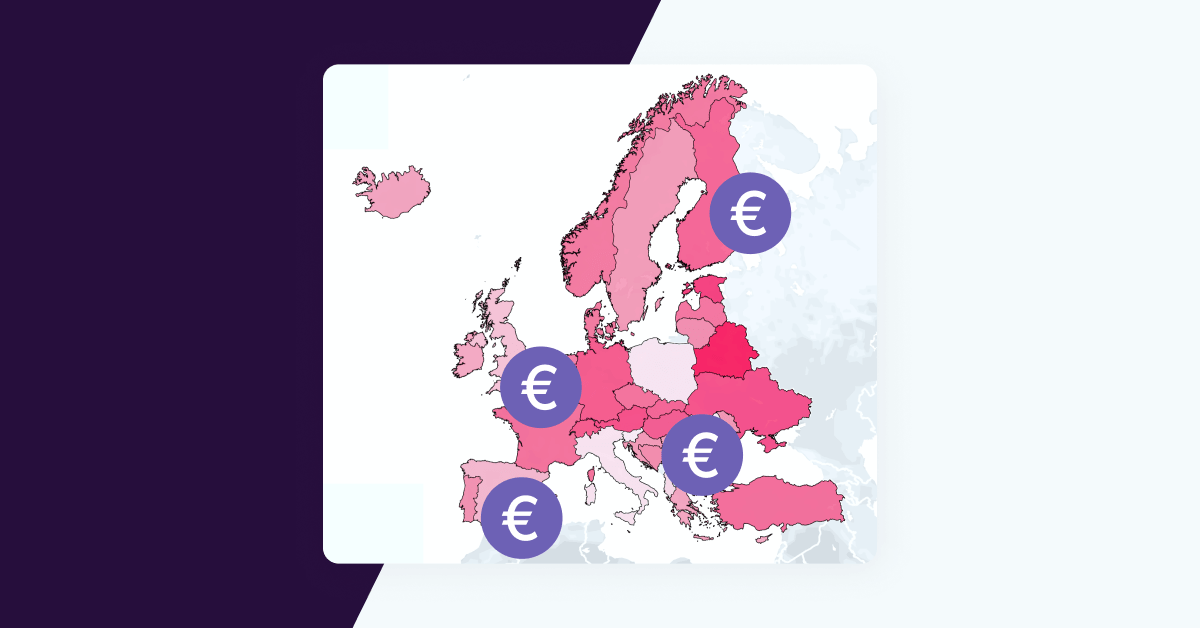The gender pay gap is the most standard metric used to illustrate how women do not achieve the same labour market outcomes as men. Multiple European countries have published their gender pay gaps, most notably the United Kingdom, which makes public the pay gap for each company over a certain size.The recently passed EU Pay Transparency Directive aims to close the pay gap across countries by requiring public reporting on pay gaps as well as greater transparency around pay and career progression.
What is the current state of the pay gap in Europe in 2024? We combined data from Eurostat, the International Labour Organisation, and a few national-level statistics organisations to provide a high level view of pay gaps across Europe. Only in Luxembourg do women earn as much as men, and the average pay gap across all European countries with data available is 12%.
What is the gender pay gap?
The gender pay gap is the difference in average earnings between men and women, usually calculated as the difference in mean or median wages and often referred to as the unadjusted pay gap. For the data sources we used in this analysis, the pay gap is the difference in average hourly wages between men and women.
There are multiple factors that explain why women earn less than men — but explanation is not justification. It is more complicated than women simply earning less than male peers who perform the same or similar work — though this difference, usually referred to as pay inequity or the adjusted pay gap, is also real. Other factors include occupational segregation, a relatively low proportion of women in management and leadership (known as the opportunity gap), and the fact that women are more likely to take career breaks or to work part-time (often due to cultural gender norms and expectations).
The gender pay gap in Europe by country
The gender pay gap is not uniform across Europe. In Luxembourg, women earn just as much as men do on average, though women earn less in all other European nations. Pay gaps range from 3.6% in Romania and 3.8% in Slovenia on the low end, to as high as 20.5% in Estonia and 28.9% in Belarus. You can explore the pay gaps across Europe in the map below.
European countries that rank well in the World Economic Forum’s (WEF) Global Gender Gap Index do not necessarily have the most equal earnings for men and women. Five of the top six spots on the WEF index are European countries, but these countries have pay gaps near or worse than the average. Women earn 10.4% less in Iceland and 11.2% less in Sweden, which rank first and fifth in the WEF index. Pay gaps are larger than the European average in Norway (14.3%), Finland (16.5%) and Germany (17.6%) which rank 2nd, 3rd, and 6th on the WEF index.
Does your organisation have a gender pay gap?
Gender pay gaps at the national level reflect the fact that women tend to earn less than men at the organisational level. The good news is that organisations can take concrete steps to identify and address issues in workplace equity that drive these pay gaps.
Specifically, companies should ensure both pay equity — that women earn similar amounts as their peers in similar positions — as well as opportunity equity — that women are not less likely to be promoted to or occupy management and leadership positions.
Syndio’s Workplace Equity Analytics Platform enables companies to tackle their pay gaps by analysing and resolving pay inequities, ensuring fair starting salaries, and measuring fairness in hiring, promotions, and retention. This approach not only aligns with global regulations but also fosters a culture of trust and transparency where every employee can thrive.
The information provided herein does not, and is not intended to, constitute legal advice. All information, content, and materials are provided for general informational purposes only. The links to third-party or government websites are offered for the convenience of the reader; Syndio is not responsible for the contents on linked pages.



